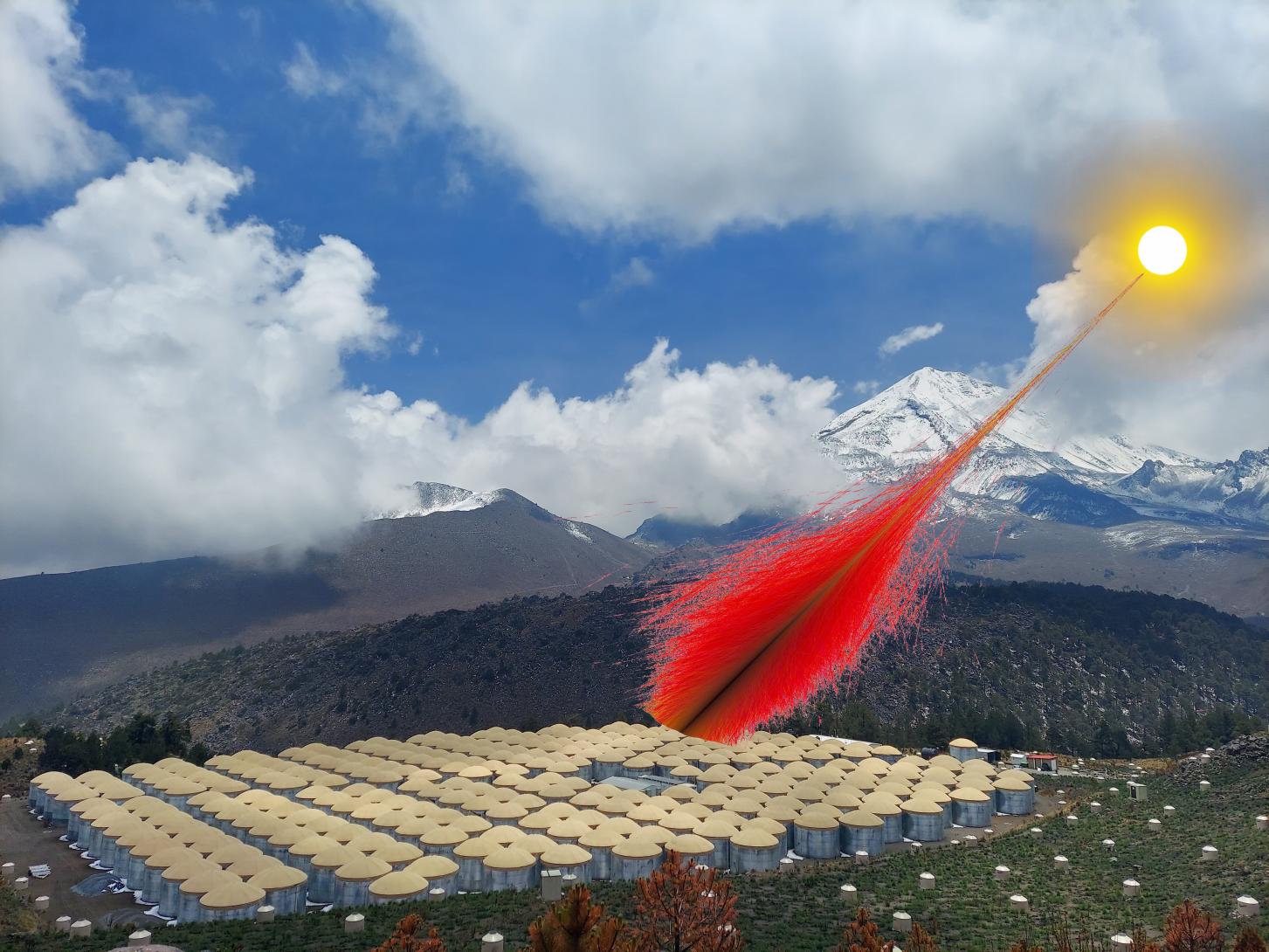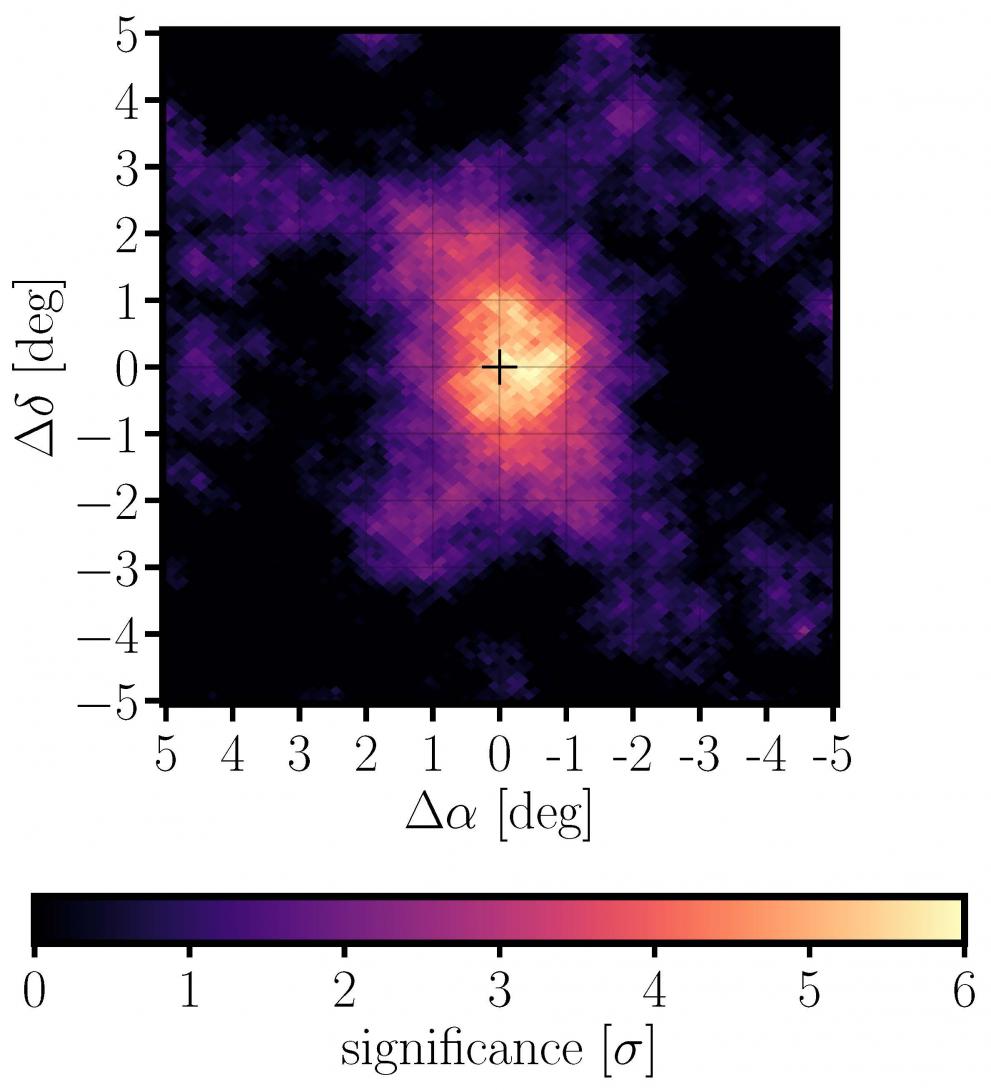HAWC Collaboration Helps Discover the Sun's Most Energetic Light
- Michigan State University astrophysicists were part of an international collaboration that found that the Sun sends out gamma rays with energies higher than previously known.
- The research was published in the journal Physical Review Letters.
- Gamma rays lose energy upon entering the Earth's atmosphere, so they do not represent a danger to life. This fact also makes it possible that these rays could be discovered by researchers at the High-Altitude Water Cherenkov Observatory, or HAWC, located in Mexico.
- "This shows that HAWC contributes to our knowledge of the galaxy at the highest energies, and that it finds new unknowns about our own Sun," says Mehr Un Nisa, a postdoctoral researcher at MSU and corresponding author of this new report.
Sometimes the best place to hide a secret is in the light of day. Just ask the Sun.
"The Sun is more amazing than we think," says Mehr Un Nisa, a postdoctoral researcher at Michigan State University. “We think we understand this star well, but that is not the case.”
Nisa is the corresponding author of a new paper published in Physical Review Letters detailing the discovery of the highest energy light from the Sun.
The international team behind this discovery also found that this type of light, known as gamma rays, is surprisingly intense. That is, there is more than scientists had anticipated.
Observing from HAWC
Although the high-energy light does not reach Earth's surface, these gamma rays leave behind signals that were found by Nisa and her collaborators at the Cherenkov High Altitude Light Observatory, or HAWC.
Funded by the NSF agency in the United States and by Conahcyt in Mexico, HAWC is an important part of this story. Unlike other observatories, HAWC works all the time.
"We now have observational techniques that were not possible a few years ago," says Nisa, who works in the Department of Physics and Astronomy at the College of Natural Sciences.
"In this energy regime, other observatories installed on the Earth's surface cannot observe the Sun because they only work at night," says Nisa. "Ours operates all the time."
In addition to working differently from traditional telescopes, HAWC looks very different.
Rather than being a lens-equipped cylinder, HAWC uses an arrangement of 300 large water tanks, each holding around 200 metric tons of water. This arrangement is located between two inactive volcanoes in Mexico, more than 4,000 meters above sea level.
From this location, HAWC can observe the result of a gamma ray colliding with the atmosphere. These collisions create what are known as atmospheric cascades, which are similar to explosions of particles that are imperceptible to the naked eye.
The energy of the initial gamma ray is released and redistributed among the new fragments produced in the explosions, that is, particles with lower energies and in light. It is these new particles—and those that are created later during the descent of the atmospheric cascade—that HAWC is able to “see”.
When the particle cascade reaches HAWC's water tanks, it generates what is known as Cherenkov radiation, which can be detected with HAWC's instruments.
Nisa and his colleagues began recording data in 2015. By 2021, the collaboration had acquired enough data to begin examining the Sun's gamma rays with sufficient precision.
“After studying six years of data, we started to see an excess of gamma rays,” says Nisa. “When we first encountered this, we thought: we definitely made a mistake. The Sun can't shine as bright at these energies."
Making history
The Sun produces a large amount of light in a wide range of energies, but light at some energies is more abundant than others.
For example, through nuclear reactions, the Sun provides a large amount of visible light—that is, light that we can see with our eyes. This type of light has an energy of about one electron volt, which is a unit of measurement used in physics.
The gamma rays that Nisa and his colleagues observed are about a trillion electron volts, or one Tera electron volt, abbreviated as one TeV. What was surprising was not only the energy, but also the amount of light that is observed.
In the 1990s, scientists predicted that the Sun could produce gamma rays when high-energy cosmic rays—particles accelerated by astrophysical objects such as black holes or supernovae—collide with protons from the Sun. But, based on what is known about cosmic rays and the Sun, the researchers predicted that it would be very rare to see these gamma rays reach Earth.
However, at the time there were no instruments capable of detecting such high-energy gamma rays, and that would be the case for a while. The first observation of gamma rays with energies greater than a billion electron volts was made by NASA's Fermi Space Telescope in 2011.
Over the next several years, the Fermi Observatory demonstrated not only that these rays were very high in energy, but also that there were about seven times as many as originally anticipated. And it seemed that there would be gamma rays of even higher energy to be discovered.
When a telescope is launched into space, there is a limit to how big and how powerful its detectors can be. Gamma ray measurements from the Sun that were possible with the Fermi telescope have a maximum of about 200 billion electron volts.
Theoretical physicists led by John Beacom and Annika Peter, both professors at Ohio State University, spurred the HAWC collaboration to make measurements.
“They pushed us and said, 'We don't see that there is power outage. It is probable that they can observe something”, mentions Nisa.
The HAWC collaboration involves more than 30 institutions in North America, Europe, and Asia, and a significant fraction is represented by the approximately one hundred authors of this new publication. This includes three additional Spartans: graduate student Daniel Salazar-Gallegos, Professor Emeritus James T. Linneman, and Kirsten Tollefson, professor of physics and astronomy and associate dean at MSU Graduate School.
For the first time, the collaboration has shown that the energies of the Sun's rays extend into the TeV range, up to almost 10 TeV, which appears to be the maximum energy, says Nisa.
Right now, the discovery raises more questions than answers. Scientists who study the Sun are now wondering how gamma rays can reach such high energies and what role the Sun's magnetic field plays in this phenomenon, says Nisa.
However, when it comes to the cosmos, this is part of the excitement. This one shows us that there was something wrong, or missing, or both, when it comes to understanding our closest star.
"This shows that HAWC contributes to the understanding of our galaxy at the highest energies, and raises new questions about our own Sun," says Nisa. “It makes us see things in a different light. Literally."

Composite image showing a photograph of the HAWC observatory in Mexico detecting particles, whose trajectories are shown as red lines, generated by gamma rays from the Sun. Researchers from Michigan State University were part of the team that observed these particles and gamma rays. Credit: Mehr Un Nisa.

How the gamma-ray excess appears in the HAWC observatory data. The collaboration includes researchers from Michigan State University. Credit: Courtesy of the HAWC collaboration.
Luis Enrique Erro # 1, Tonantzintla, Puebla, México, Código Postal 72840, Tel: (222) 266.31.00, difusion@inaoep.mx
This work is licensed under a Creative Commons Attribution-NonCommercial-NoDerivs 2.5 Mexico License.


